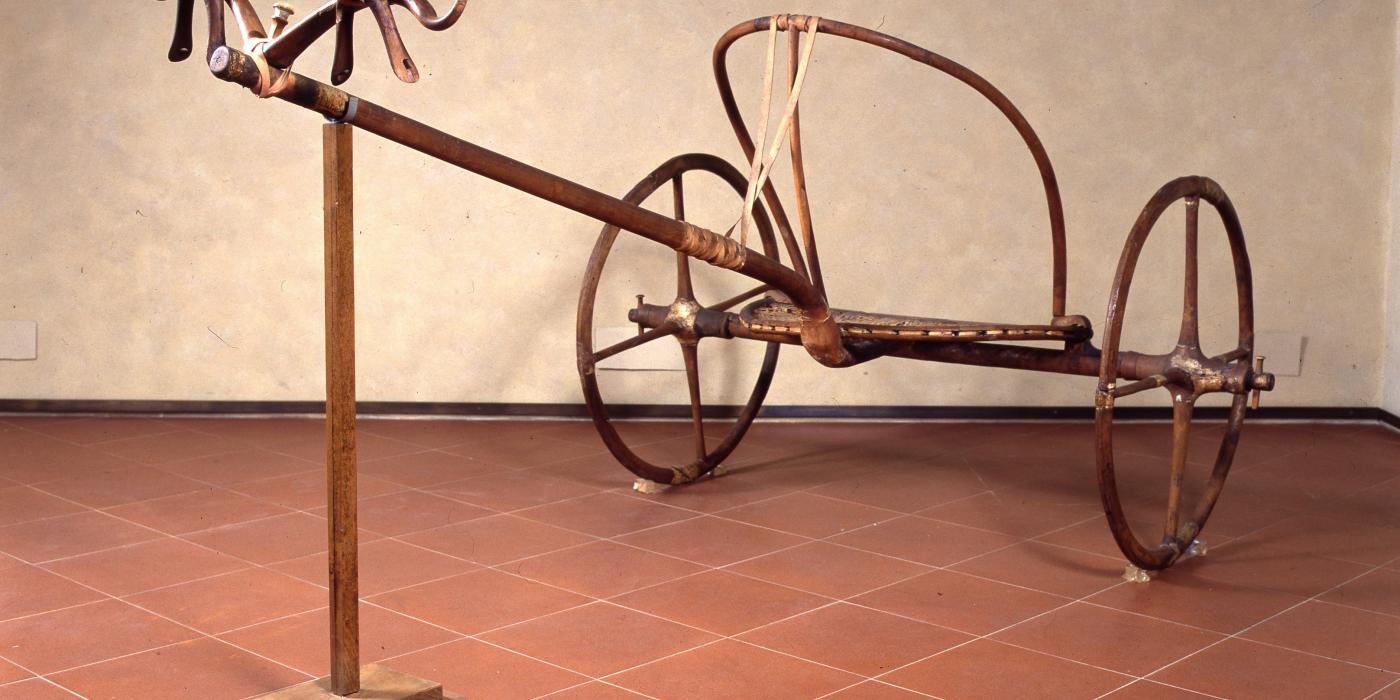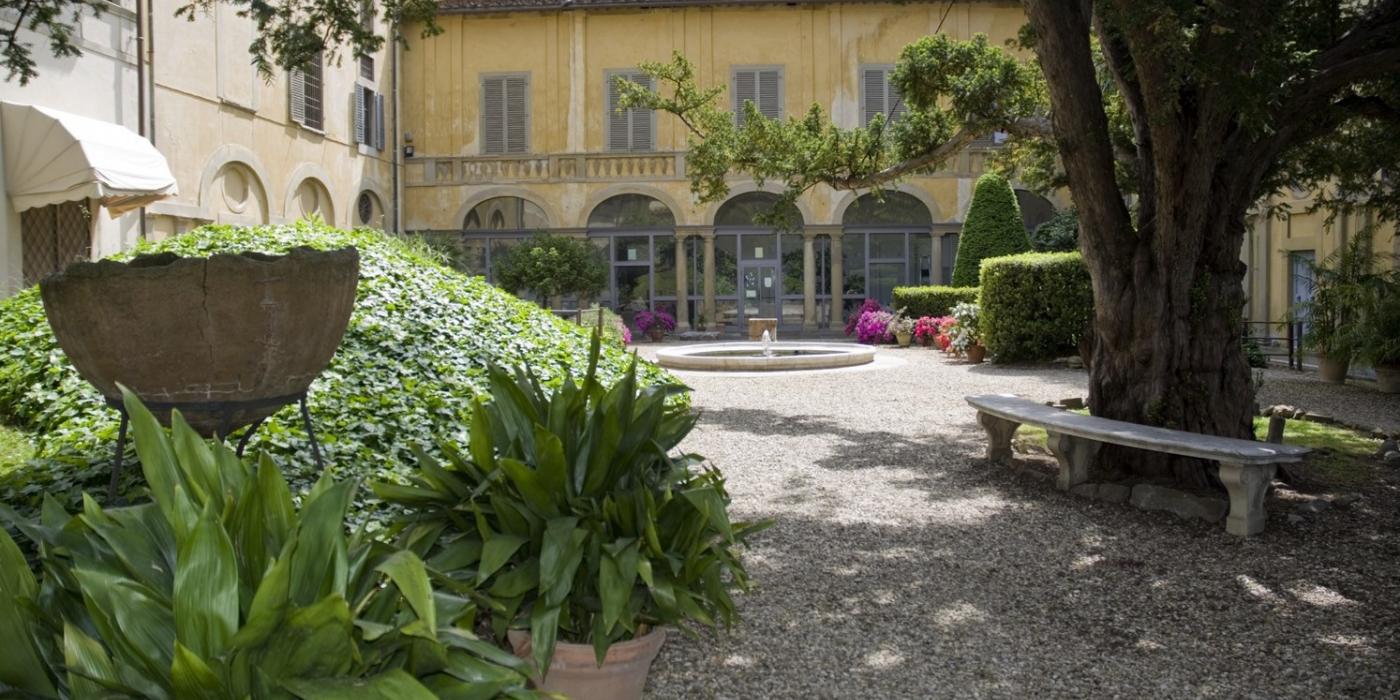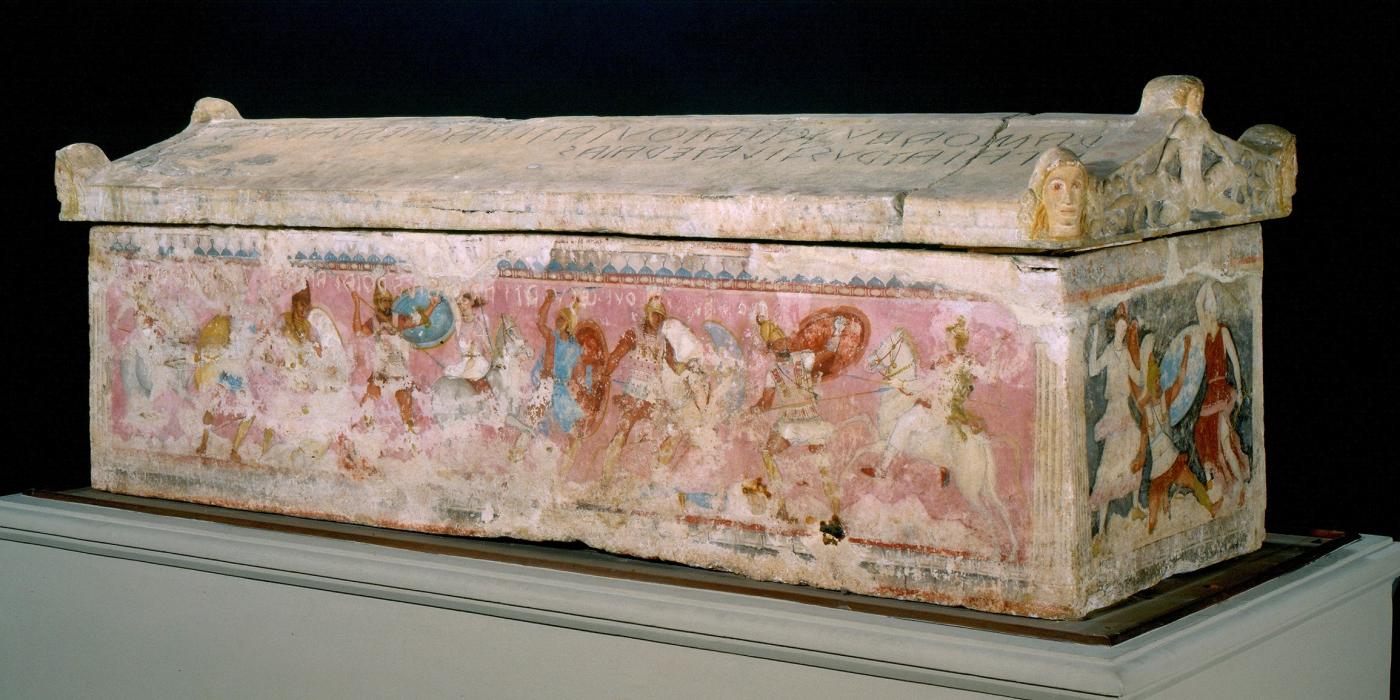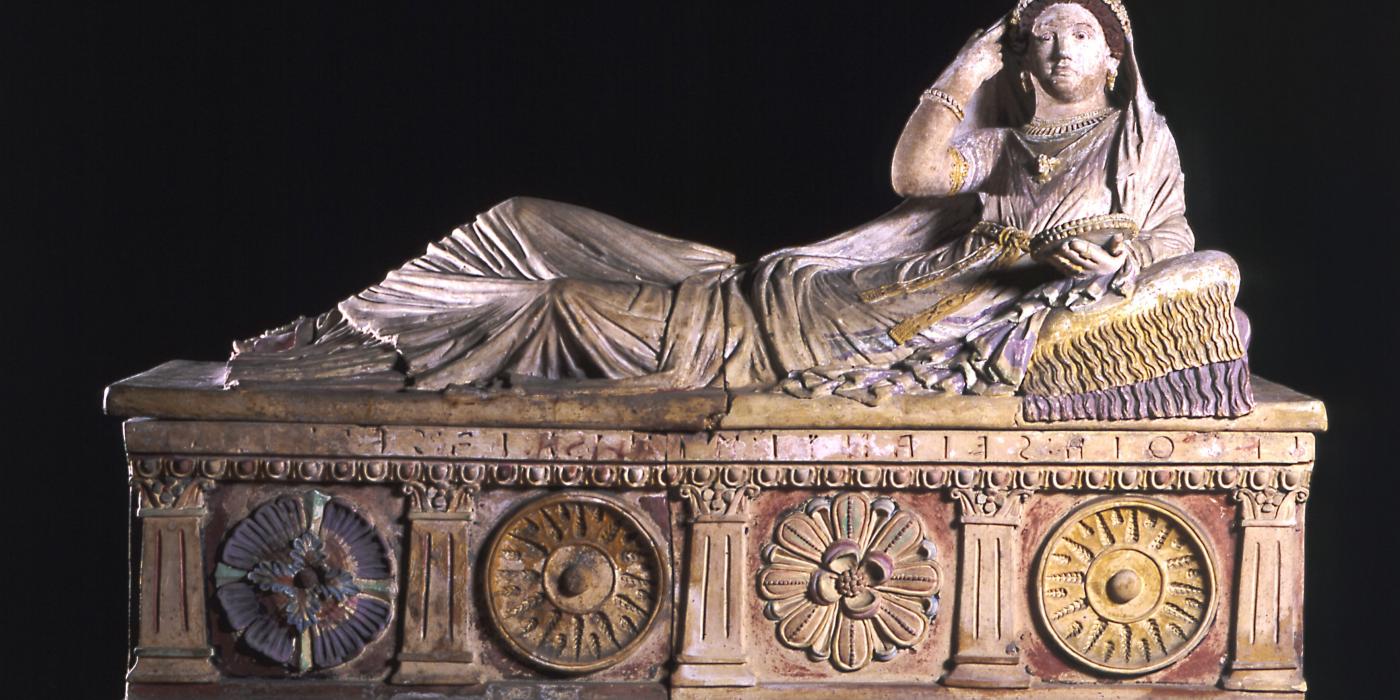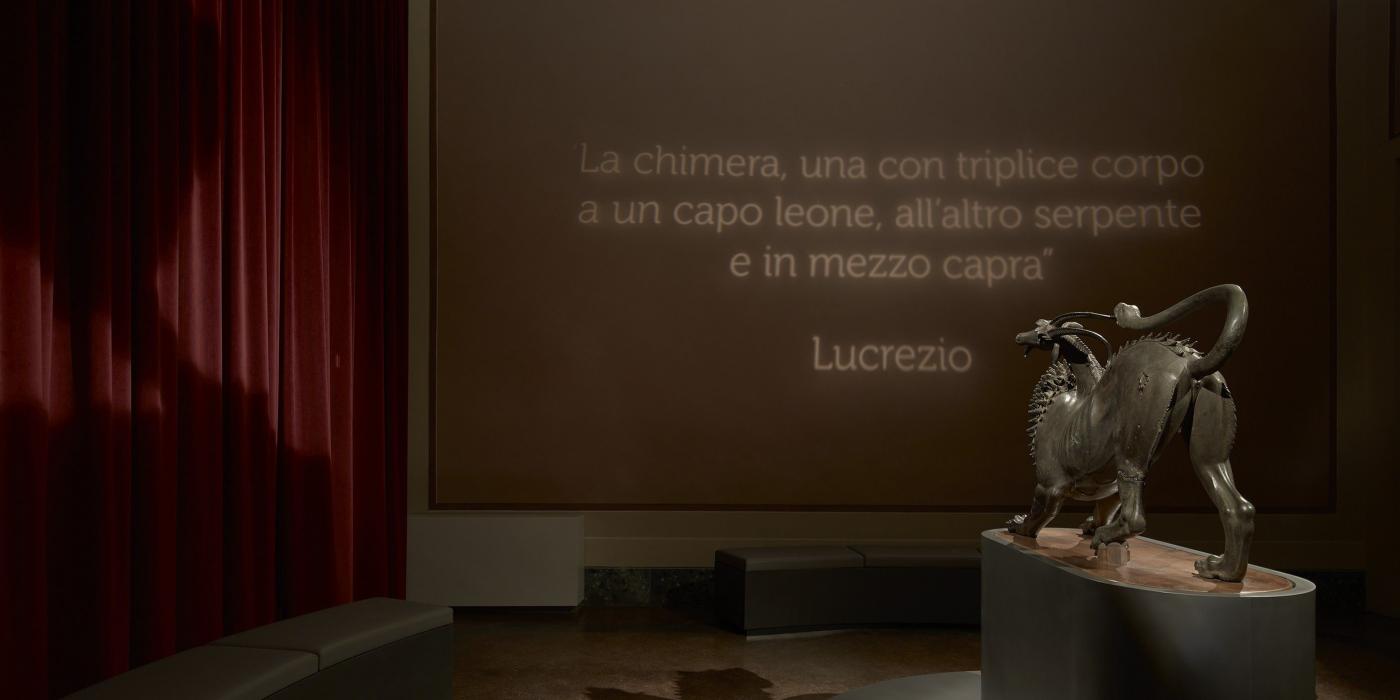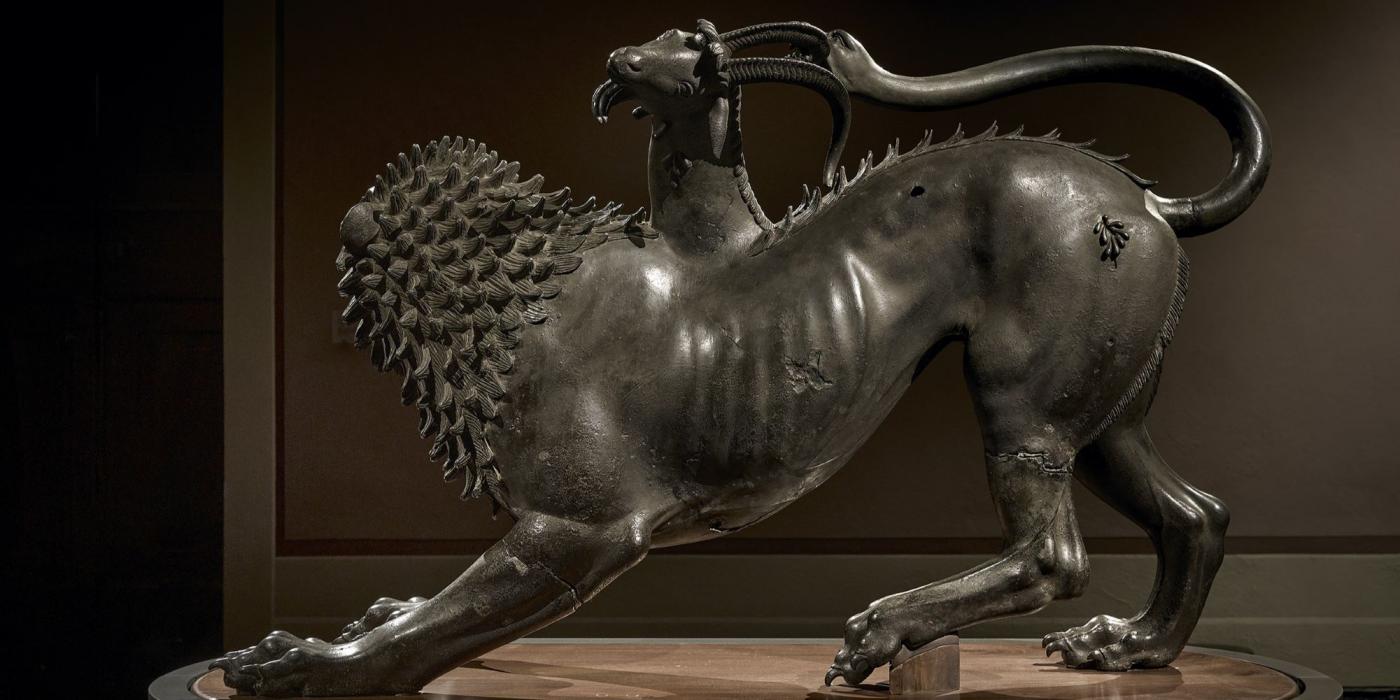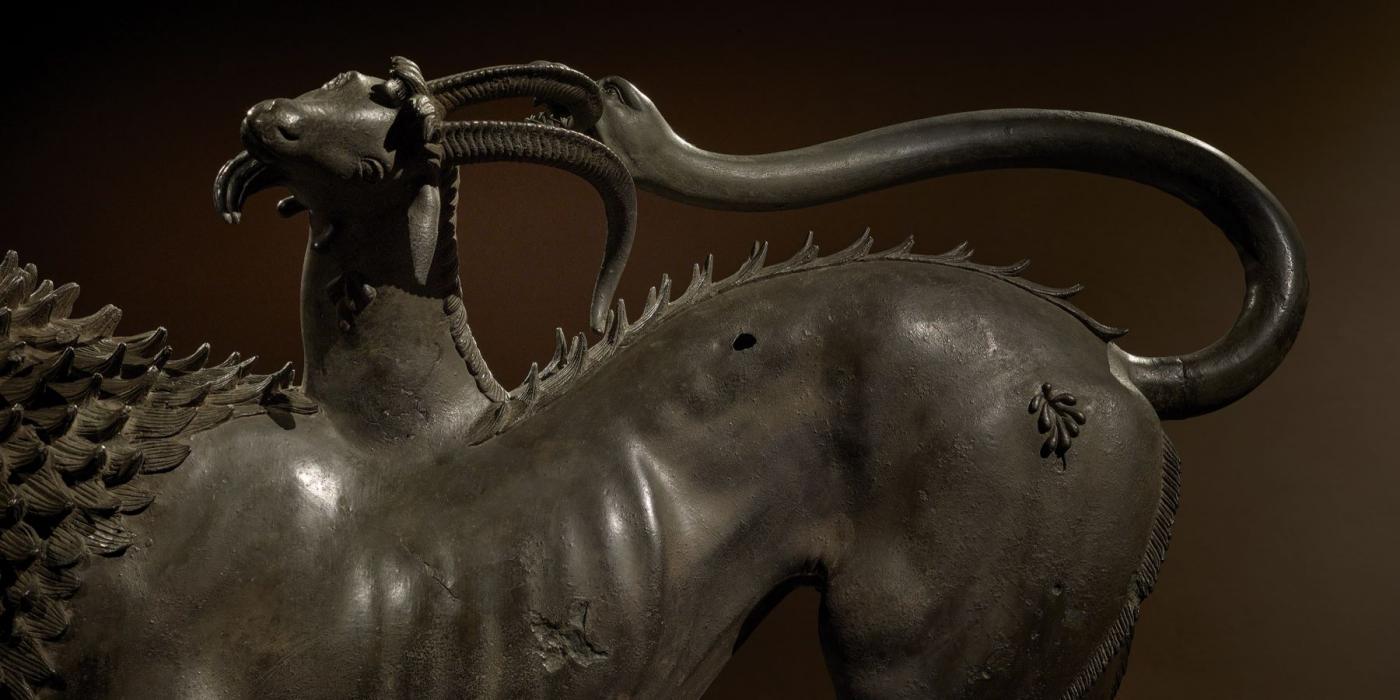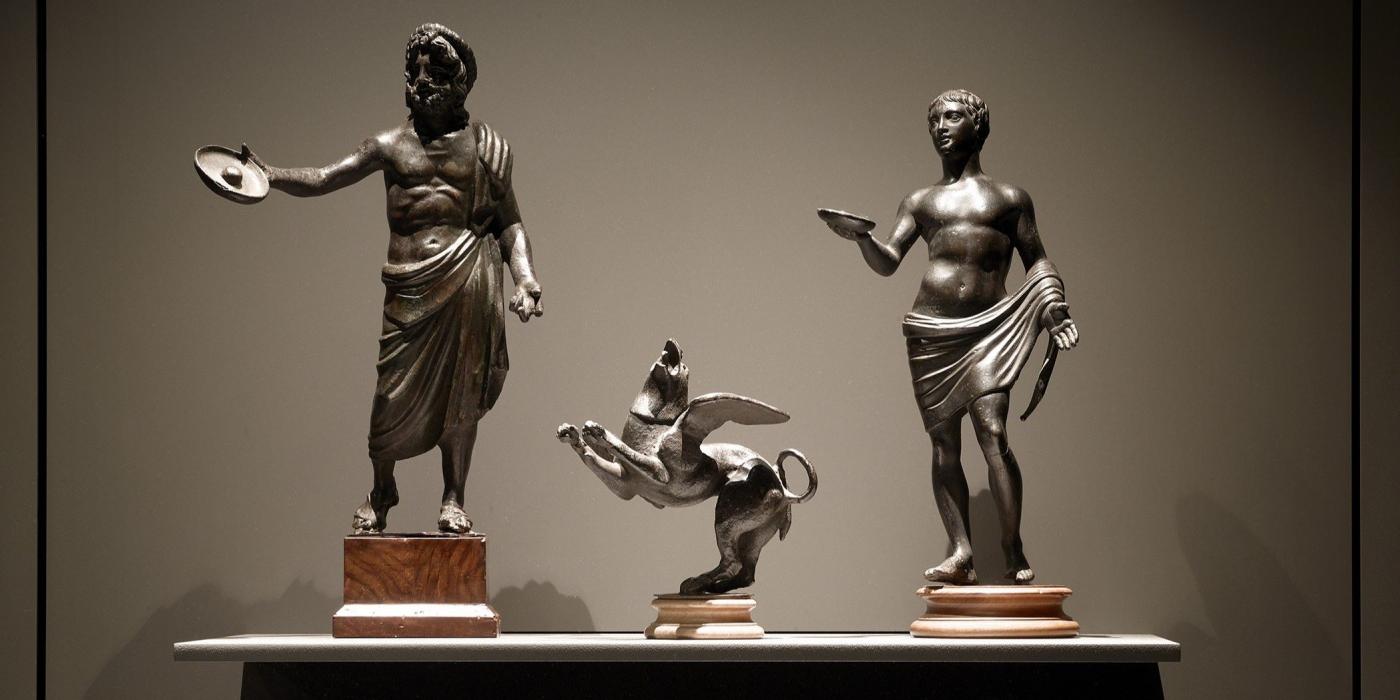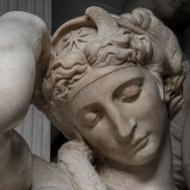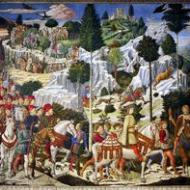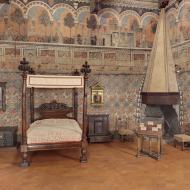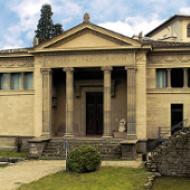The National Archaeological museum in Florence was founded at the end of the 19th century to host the inheritance of Florentine archaeological collections created during the centuries by the Medici and Lorena families. Each exhibition is structured in three large sections – the Etruscan Section, the Section of Ancient Collections and the Section of the “Egyptian Museum” -, plus a large monumental garden with the reconstruction of Etruscan tombs.
The Egyptian collection, one of the largest in Italy, includes a hunting carriage in wood from Thebes, the famous relief of Goddess Maat, numerous mummies and one of the portraits of Fayyum, in addition to a large collection of dresses and fabrics dating back to the Coptic age. The monumental ancient bronzes include the large bronze Chimera, the famous Arringatore, Minerva di Arezzo and the horse head. The Chimera, symbol of the Museum, is the three-head monster (lion, goat and snake) defeated by hero Bellerefonte. Another displayed masterpiece is François Vase, a large Attic volute krater with black figures dating back to the 6th century B.C., decorated by friezes of Greek mythology.
The Egyptian collection, one of the largest in Italy, includes a hunting carriage in wood from Thebes, the famous relief of Goddess Maat, numerous mummies and one of the portraits of Fayyum, in addition to a large collection of dresses and fabrics dating back to the Coptic age. The monumental ancient bronzes include the large bronze Chimera, the famous Arringatore, Minerva di Arezzo and the horse head. The Chimera, symbol of the Museum, is the three-head monster (lion, goat and snake) defeated by hero Bellerefonte. Another displayed masterpiece is François Vase, a large Attic volute krater with black figures dating back to the 6th century B.C., decorated by friezes of Greek mythology.
Information:
Address:
Via della Colonna 38, 50122 - Firenze, FIPhone:
+39 055 23575
Access notes:
Direct access from the ticket office and entry into the first available visit slot.
Last admission 45 minutes before closing.
Free admission every 1st Sunday of the month; priority access suspended.
Access for disabled:
Photo gallery
Museum timetables:
Related museums
